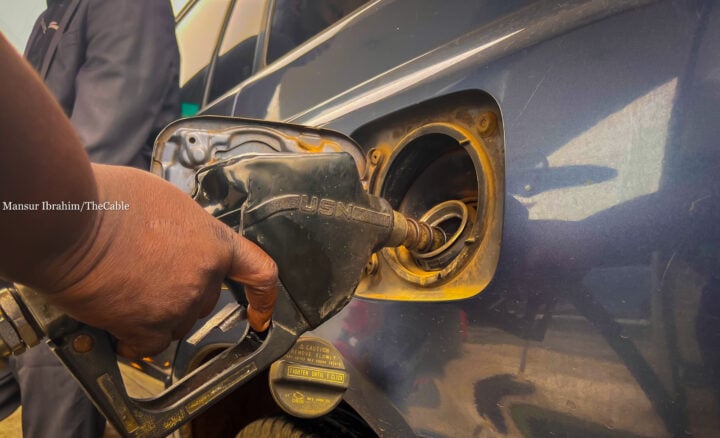The Nigerian National Petroleum Company (NNPC) Limited says it has signed an agreement with Chevron Nigeria Ltd (CNL), its joint venture (JV) partner, on the conversion of five oil mining lease (OMLs) into four petroleum prospecting licence (PPLs) and 26 petroleum mining lease (PMLs).
In a statement by Femi Soneye, NNPC’s spokesperson, the national oil company said the signing ceremony was held on Monday at the NNPC Towers, Abuja.
NNPC said the signing is in line with the provisions of the Petroleum Industry Act (PIA) but did not specify the converted assets.
“In line with the Petroleum Industry Act (PIA) 2021 provisions of transiting assets from the Petroleum Profit Tax (PPT) into PIA terms, the NNPC Ltd. and its Joint Venture (JV) partner, Chevron Nigeria Ltd (CNL), have concluded the conversion of five of its JV assets into the PIA terms,” the company said.
Advertisement
Under the new PIA regime, NNPC said “all existing Oil Prospecting Licenses (OPLs) and Oil Mining Leases (OMLs) would be automatically converted to Petroleum Prospecting Licenses (PPLs) and Petroleum Mining Leases (PMLs) upon their expiration”.
“Nonetheless, an option of voluntary conversion is provided for holders of OPLs and OMLs (Operator, Licensees or Lessees) under the erstwhile Petroleum Profit Tax (PPT) regime. The PIA terms are generally perceived as more investor-friendly, compared to the erstwhile PPTA terms,” the oil firm said.
“During the ceremony, the two partners signed documents on the conversion of five (5) OMLs into four (4) PPLs and twenty-six (26) PMLs, in line with the new PIA terms, marking a significant step towards increasing domestic gas supply and expanding global market presence.”
Advertisement
KYARI: CHEVRON HAS BEEN A PARTNER OF CHOICE
Speaking at the occasion, Mele Kyari, NNPC’s group chief executive officer (GCEO), described Chevron as one of the national oil company’s most reliable partners.
“Over the years, Chevron has been a partner of choice that has not contemplated completely divesting/exiting (oil production in) the shallow water and we are proud of them,” he added.
Kyari assured Chevron that NNPC would maintain its partnership to create more value for both parties and expand Nigeria’s footprints in the domestic and export gas markets.
Advertisement
He commended the Nigerian Upstream Petroleum Regulatory Commission (NUPRC) for its outstanding role in modifying the conversion.
On her part, Michelle Pflueger, director, deepwater and production sharing contract (PSC) of Chevron, stressed the significance of the conversion for both companies, affirming CNL’s long-standing commitment to the assets.
Also speaking, Oritsemeyiwa Eyesan, NNPC executive vice-president, upstream, highlighted the benefits of the PIA terms over the previous PPT terms, adding that the conversion was a strategic move towards the successful implementation of the PIA.
In his remarks, Bala Wunti, NNPC’s chief upstream investment officer, said the assets’ conversion is expected to significantly bolster crude oil production — with the two partners focusing on attaining 165,000 barrels per day (bpd) crude oil production target by year-end.
Advertisement
He highlighted how crucial CNL’s operating philosophy is to preserving network stability and facilitating the supply of gas, particularly to the domestic market.
WHY CONVERSION TO PMLs AND PPLs?
Advertisement
The PIA introduces the petroleum exploration licence (PEL), PPL and PML, which essentially replace the oil exploration licence (OEL), oil prospecting licence (OPL) and OML, respectively.
Like the OEL, the PEL grants the holder permission to conduct non-exclusive exploration within a designated area.
Advertisement
Afterwards, the PPL grants the holder exclusive rights to drill exploration and appraisal wells.
Thereafter, full-scale commercial production is permitted under PML.
Advertisement
CONVERSION TO PML AND PPL
OML holders have the option to convert their licences after their expiration date.
The PIA mandates holders of OMLs to voluntarily convert to PPLs or PMLs.
The law categorises existing marginal fields under two transitional structures based on whether the marginal field is a producing field or a non-producing field.
Consequently, the act provides that non-producing fields be converted to PPLs while producing fields should be converted to PMLs.
In essence, holders of the OMLs with non-producing blocks, during conversion, have to split them into PPLs and PMLs, according to the PIA.
As such, one OML can be converted to several PMLs and PPLs.
Add a comment








